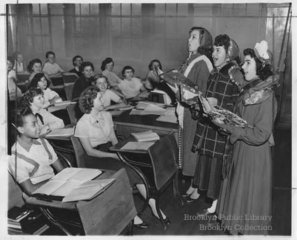The Edwardian theatre was one of the formidable forms of theatre in late nineteenth-century Europe. People from different countries of Europe used to come to be a part of this cultural extravaganza.
Theatre has always played an important role in Europe. Right from Germany to France, the theatre played an important role in Europe right from the Renaissance. However, England was always hailed as the epitome of theatrical endeavour due to stalwarts like Shakespeare and Marlowe who raised the bar for theatre in Europe.
When we come to the Edwardian era, we find that people always preferred live performances as opposed to picture shows. Theatre in this era consisted of plays written by George Bernard Shaw and Harley Granville Barker. This was also called the period of New Drama.
Shaw focused on the pangs of the working class. He is the only person to have been awarded an Oscar (1938) as well as Nobel Prize for Literature (1925). He is mostly known for his plays like Mrs. Warrens Profession (1893), Candida (1894) and You Never Can Tell (1897).
The plays of Barker, on the other hand, focused on the experimentation with form. His ideas and dialogues were revolutionary. His most famous plays include Waste (1907), The Voysey Inheritance (1905) and The Madras House (1909).
There was a lot of interaction going on with the continental imports by playwrights like Henrik Ibsen and Gerhart Hauptmann. Ibsen’s plays were basically considered scandalous as they did not conform to the moral codes of the strict Edwardian theatre.
Issues of morality and the human condition were critically examined in his plays.
Ibsen’s most famous plays were Ghosts (1881), An Enemy of the People (1882) and The Wild Duck (1884). Hauptmann on the other hand dealt with the movement of Naturalism in Germany with Before Dawn (1889).
Some of his other famous works include The Reconciliation (1890), Lonely People (1891) and The Weavers (1892). The last drama was about the uprising of Silesian weavers, an incident that happened in 1844.
Even though the society was a very conservative one, playwrights and novelists voiced their opinions through radical drama. Some of the most famous playwrights of Europe were part of Edwardian Theatre.
Edwardian Music
Music for mass reproduction was still an unrefined sector with technology to provide means still being in a very nascent stage. The phonograph was still pretty poor when it came to quality and music concerts were still the rage. The chief proponents of music during this era were the likes of Edward Elgar, George Butterworth and Thomas Beecham.
The most famous centers of musical performance came at what history puts down as Music Halls which were a popular place for musicians of all varieties. The Music Halls were established in the mid 19th century and became popular in the Victorian era. These halls would stage a combination of music with other performing arts thus limiting the individuality of music.

However music and Music Halls went through somewhat a musical revolution in the Edwardian music era when a nationwide strike was held by musicians in 1907 in order to emphasize the importance of the musician and his/her works. Such was the impact of the strike which was known as the Music Hall War, that the first copyright laws for music came into being. Musicians of the Edwardian era were seldom well paid and hence the footings of the modern music industry were laid by the efforts of the musicians to this effect.
Nevertheless the Edwardian music era flourished during this time and it augured well for music in more ways than one. Since then music has come forth to be acknowledged as a more important means of self expression. The Edwardian music era reestablished the pride and Importance of the musician. This in itself led to a great atmosphere later on as music became much more valued in human society.